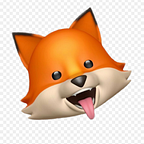Travel photography with an iPhone 8 Plus?
Going back to 2010 when I got my first iPhone, it quickly became my main camera, replacing a 3 megapixel compact. I used it a lot and enjoyed it, not analysing my shots too much and having fun with filters and apps. I’d whip the camera out on a whim to capture any interesting play of light, not paying a whole lot of attention to blown hilights and the rest of it. If it looked right, it was right.
Fast forward to 2015 when I started getting deeper into photography, I craved the best possible camera, spending thousands upon thousands of dollars and way too much time in front of the computer. Slowly, I came to the realisation that the need for these things can be mitigated with better photography. So I sold my Sonly A7s.
I questioned the need to shoot in RAW format too, and wrote about the transition to JPEG while I was in Japan in 2015.
To be honest, many of the thousands of photos taken in Japan there could have been better if taken RAW and processed. The practical reason for shooting JPEG in Japan was that I planned to shoot so much. Shooting JPEG left me mostly with photos that were good as they were. If shot in raw, I would have had to process them all or at least sort them out. Considering that I was still looking at the JPEGs two years later, I think RAW would have been a bad idea.
Three years later I have continued with JPEGs, now using a Fujifilm X100S which I rarely use in RAW mode. The Fuji is definitely suited to JPEG snapping, but still, there is a manual process involving SD cards and importing into the Photos app, a process that still doesn’t scale that well. So in planning my travel, I started to think about how I was going to do it all.
Am I going to buy a new camera for Japan? The X100S is good for the odd shot, but there’s no WiFi or geotagging. How about the X-Pro 2? Oh, still no geotagging. Also, that’s a lot of $$$ on top of an already expensive trip, and I need a new phone soon too. Oh, how’s that new iPhone camera? Hey, wouldn’t it be cool if all my photos were automatically geotagged and uploaded by themselves?
As soon as I started thinking about these things, I knew it was on. After a day’s research and another day convicing my partner, I got the 8 plus. It’s ironic that I’m considering the most major shift in how I photograph, yet again on the verge of a trip to Japan.
Initial experiments seem good. What I’ve learned is that for the most common uses, the default iphone camera will do a good job. But there are other apps might be useful in edge cases — which are generally where more interesting photos come from — so it will be important to learn what to use and when.
ProCamera is an app i can tell will get a lot of use. Shooting with both cameras at once to create a discernibly higher fidelity image is effective. The range of filters and convenient swiping between them puts it right out there ahead of other editing apps too.
There are of course doubts about the viability of the iPhone 8 as a main camera though.
Will I need to shoot in raw again? iPhones can shoot raw, but it means reintroducing that administrative overhead.
Will I be happy with the way iPhone compresses JPEGs? Probably not, any gradients can sometimes get really blotchy. Maybe the higher resultion camera makes it worse than it was on the 6, but I’m not sure yet. Third party apps that allow custom compression will be essential in such cases.
Which leads me to speed of use. If I have to keep different camera apps on hand, Will I be able to use the cameras fast enough? And importantly, will the photographic process be as enjoyable? I will likely need to experiment and settle on an app, and for now my money is on Procamera, but there are more to try.
Franky, the more I use it the more I like it. While some compression artefacts can be annoying on inspection, it’s only some of the time.
Think of this though as the hypothsis, with the experiment and results to come early in the new year, or perhaps even from my journey in December.
Until then, happy snapping.
